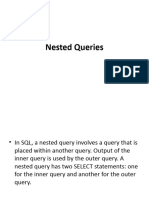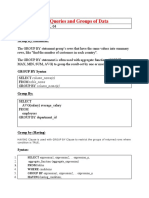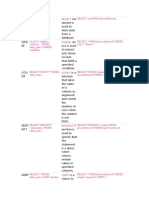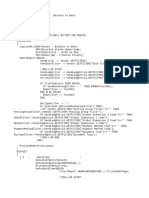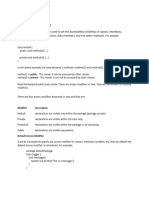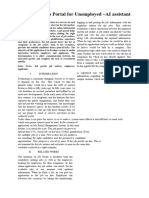0% found this document useful (0 votes)
15 views5 pagesDbms Lab Experiment 07
The document outlines SQL queries using operators such as ANY, ALL, IN, EXISTS, NOT EXISTS, UNION, and INTERSECT, applied to employee and department tables. It provides examples and explanations for each operator, detailing how they compare values and retrieve data based on specific conditions. The results of each query are also included to illustrate the outcomes of the operations performed.
Uploaded by
aimlbtech7Copyright
© © All Rights Reserved
We take content rights seriously. If you suspect this is your content, claim it here.
Available Formats
Download as DOCX, PDF, TXT or read online on Scribd
0% found this document useful (0 votes)
15 views5 pagesDbms Lab Experiment 07
The document outlines SQL queries using operators such as ANY, ALL, IN, EXISTS, NOT EXISTS, UNION, and INTERSECT, applied to employee and department tables. It provides examples and explanations for each operator, detailing how they compare values and retrieve data based on specific conditions. The results of each query are also included to illustrate the outcomes of the operations performed.
Uploaded by
aimlbtech7Copyright
© © All Rights Reserved
We take content rights seriously. If you suspect this is your content, claim it here.
Available Formats
Download as DOCX, PDF, TXT or read online on Scribd
/ 5
























